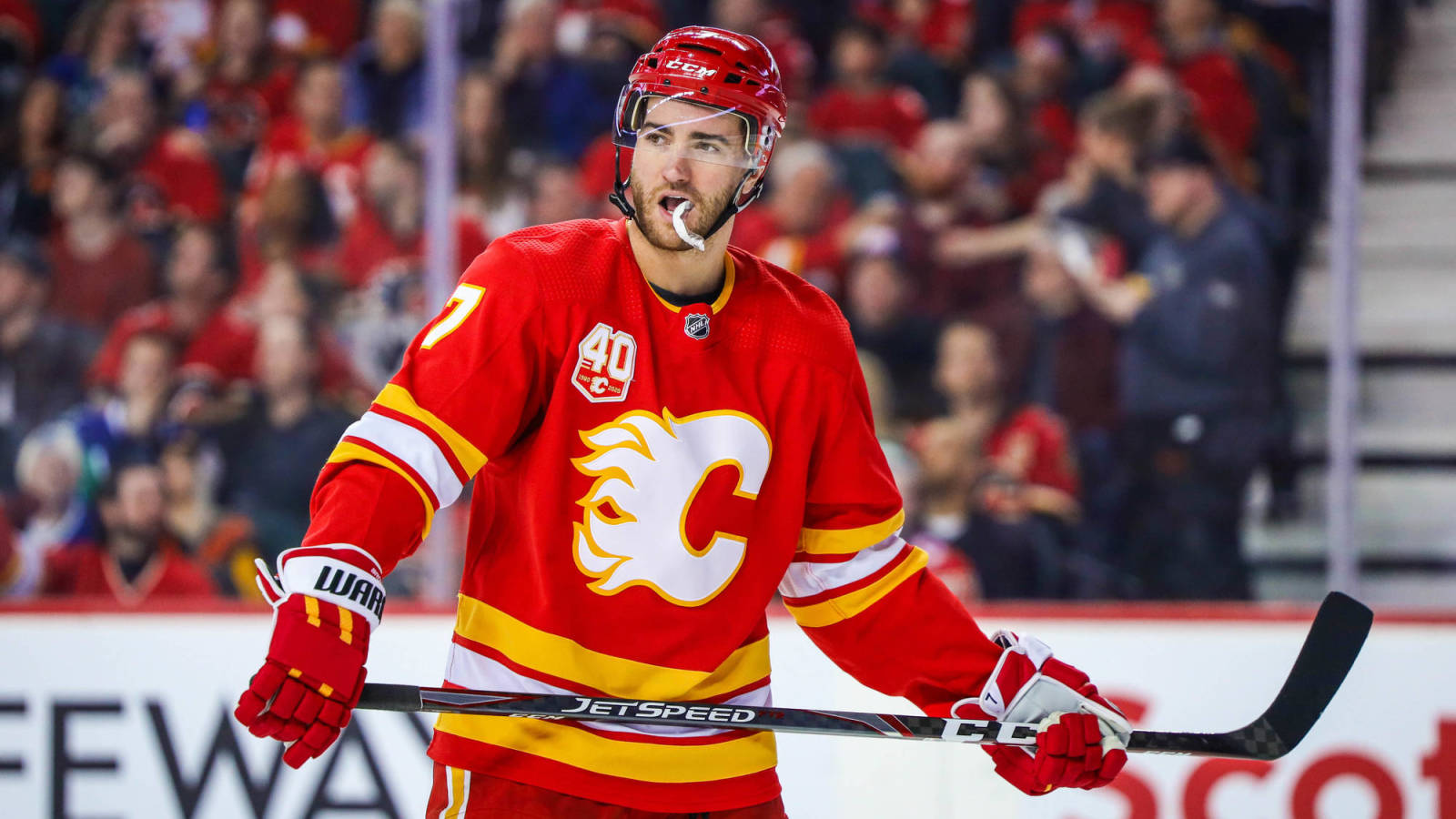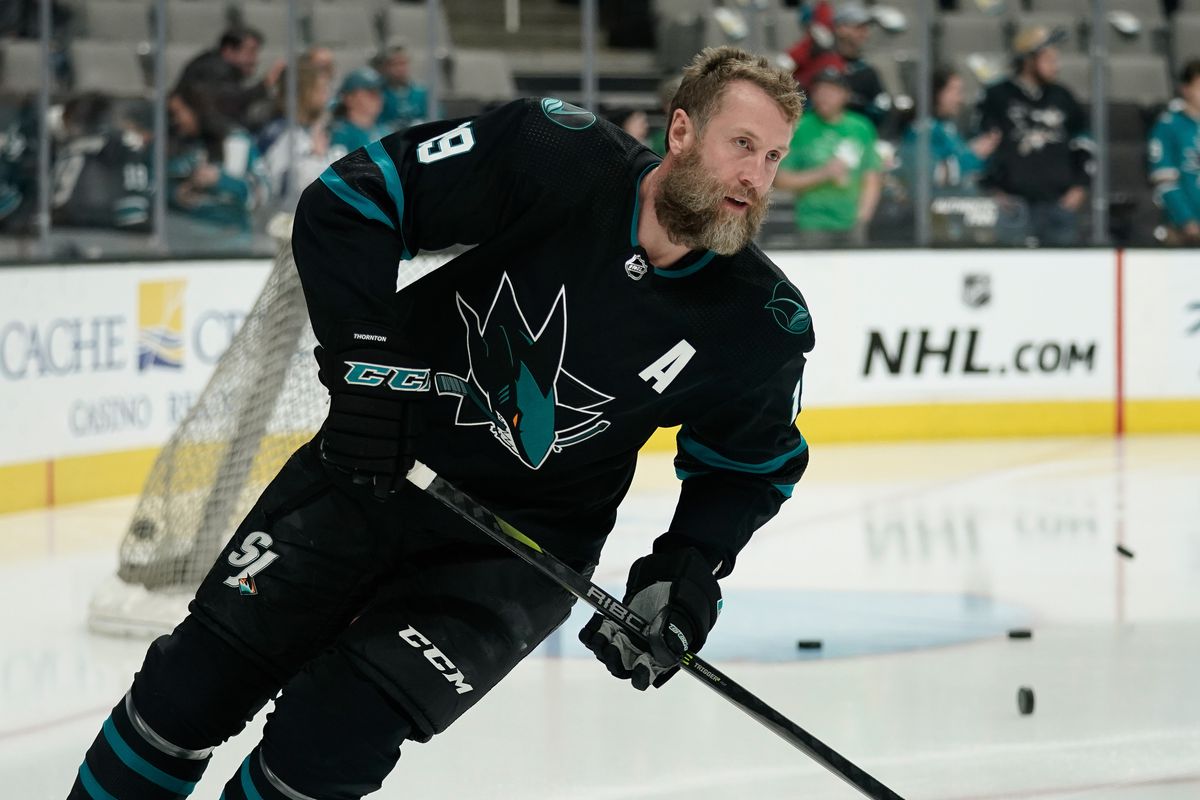Entering the offseason, there were a number of needs that were easily identifiable from the outset for the Toronto Maple Leafs.
“…improve the defense with legitimate defenders who can be trusted to handle tough minutes (at least one, ideally two), improve the bottom six, and add some center depth (not sure Alex Kerfoot – Pierre Engvall is the one-two punch you want on that side of the roster).”
To hash it out a little further, at least one top-four defenseman was needed as well as a depth blue liner so that Martin Marincin didn’t have to be the go-to guy after one injury in the top six. At forward, there was a need for additional center depth to challenge Alex Kerfoot, as well as a fourth-line option knowing Pierre Engvall projects more as a winger, where he can best utilize his speed.
We also discussed diversifying the forward group – yet again – as well as adding some checking forwards to help free up the Leafs’ skilled players to focus on offense, particularly in playoff matchups. More on this later.
We would be remiss if we didn’t touch on goaltending as well. There was heavy speculation about what the Leafs would do with Frederik Andersen, who is entering the final season of his contract and is coming off unquestionably his worst season with the Leafs. While the concerns about him are valid at this point, I noted at the time it was hard to envision a scenario playing out where the Leafs could make a series of moves that involved trading Andersen and acquiring a legitimately better goalie. Ultimately, the Leafs stuck with Andersen and added a quality third goalie in Aaron Dell to bolster their depth.
If we can learn anything from the current NFL COVID-19 season, it’s that players go down at random, and adding a third quality goaltender could become quite important.
As for the rest of the moves, here is the overall picture:
Out:
- Kasperi Kapanen
- Andreas Johnsson
- Cody Ceci
- Tyson Barrie
- Frederik Gauthier
In:
- TJ Brodie
- Joe Thornton
- Wayne Simmonds
- Zach Bogosian
- Joey Anderson
- Travis Boyd
- Jimmy Vesey
The blue line: Logical additions, clear fits

On defense, the team did about as well as could have been expected. We covered before free agency why paying big for Alex Pietrangelo would have been questionable, and Pietrangelo signed a contract in Vegas that affirmed that.
The only top-four defenseman acquisition that leaves you wanting is Nate Schmidt for a third-round pick to Vancouver, but nobody could have predicted the market softening to that extent. The Leafs certainly could not risk waiting around and praying for a shoe like this to drop.
You could quibble on the cost of Trevor van Riemsdyk and even Ryan Murray (very good when he’s playing, but can’t count on him to actually stay healthy). That’s about it, though.
Their moves on defense make complete sense and the fits are clear. Last offseason, we wondered about the Tyson Barrie fit and even speculated that he could become a sheltered power-play QB. The Brodie fit, on the other hand, makes sense on paper. He has generally played tough minutes and plays on the right side. The Leafs have a need on right defense and for a defender who can play tough minutes. He also offers potential second-unit power-play potential and is good in transition.
There is some risk that’s worth pointing out with Brodie, too. His time on ice per game last year was his lowest since the 2012-13 season, as was his shots per game output, and his points per game was his lowest since the 2013-14 season. He and Mark Giordano were straight-up bad in the playoffs this year. The final year — or even two — of that contract could prove to be an albatross. For now, it’s an upgrade to a unit that desperately needed it — a clear, logical addition.
Zach Bogosian as well as Mikko Lehtonen provide options (note: I’m not sure how Lehtonen will hold up without steady power-play time; 13 of his last 23 goals were on the power play, and I can’t see him walking into PP time here). Even including Martin Marincin, the Leafs have options in terms of the power play, penalty kill, and handedness.
Last season, the coaching staff was handcuffed when injuries struck, but now they have a number of pieces they can move in and out of the lineup. They don’t need to rush in or rely on Rasmus Sandin/Timothy Liljegren unless they force their way into the lineup. That is a desirable setup.
Overall, the Leafs did well here.
Forward: Intriguing additions, less clear fits

This is where it gets a little more interesting. You can’t question the names or veteran experience the Leafs are adding into the dressing room. Last offseason, the Leafs said goodbye to some solid veterans — although you can obviously question their actual play — in Ron Hainsey, Patrick Marleau, Nazem Kadri, and even Tyler Ennis. Sheldon Keefe repeatedly called out the maturity of the team. All of this cannot be a coincidence.
It’s not an indictment of the veterans from last season, either. You can’t expect a few players to carry the room off the ice. It takes a solid group, and the Leafs didn’t have it.
In terms of on-ice play, though, the conversation is a little more interesting.
Wayne Simmonds hasn’t been great the past few seasons. Last season, he scored three goals at even strength and his goals per game dropped to the two lowest mark since the 2010-11 season. His 5v5 play has never been a strength, and while I’m sure he could play on the top power-play unit, moving out any of Auston Matthews, John Tavares, Mitch Marner, or William Nylander for Simmonds, at least to start, seems questionable at best. If Keefe continues to overload his top unit with full two-minute power plays, how much value is Simmonds going to bring playing almost purely at 5v5?
Jimmy Vesey is coming off a season with a career-low goals per game, points per game, and a career-high PDO. He has never had a positive shot share relative to his teammates (this past season was his highest, and it was an even 0.0). He is 27, so the potential to improve drastically is low at this point.
Vesey also has a 16-goal season and two 17-goal years. He can chip in offensively, and he has started to feature on the PK in the past two seasons. However, in New York, he was considered a net negative player. In Buffalo, they were wondering if he was the least effective forward on the team at 5v5.
Joe Thornton is just an overall win at the $700k price. It can’t possibly be a loss at the minimum. The fit will be interesting, though. He was still a solid 3C last season and he did play on a terrible team. With Thornton more than anyone else, you can imagine a boost just by virtue of him playing on a better team. His points per game dropped to his lowest since his sophomore season, but it was still a respectable .44.
Thornton’s ice time, as Kyle Dubas noted, has now settled into that 15-minute range. It’s impossible not to note that he’s turning 42 next July, and his skating could be a concern. But when he gets the puck down low, Thornton is still a mountain to move (his possession numbers were still good), and I think you can envision a scenario where he moves up the lineup and plays on the left wing.
I’ve already talked about Travis Boyd, so I won’t get into much more here. He’s a depth option that could provide some scoring, in theory. Joey Anderson is intriguing; he is at an age and games played total where he still has potential, and he understands his role based on his comments regarding Zach Hyman. He could hypothetically give the team a much-needed different look in the bottom six. I think he could become sneaky important for the Leafs given the potential element he could add.
You can look at the additions and fairly argue that for next season and onwards, Andreas Johnsson and Kasperi Kapanen will be the two best players among that group. At the same time, the Leafs needed to clear cap space and they clearly did not want to touch their core. If the team comes up short again in the playoffs, the pressure to do so will only increase.
Looking at this “new” group and trying to form the lines becomes particularly challenging. It’s fair to suggest Kerfoot moves back to the wing and Thornton plays 3C – he has been steady there, and if they lower the ice time to 14 minutes or so per game, he should be able to handle it. If the right-wing options are Jason Spezza, Wayne Simmonds, and perhaps Alexander Barbanov (if he is a pleasant surprise, which would be huge), that line will likely need to be sheltered with a heavy dose of offensive zone starts.
Nicholas Robertson is a big wildcard, but any emergence from him would be a bit of a game-changer, potentially allowing them to push Ilya Mikheyev down the lineup, too.
The fourth line is a question mark at this point. Pierre Engvall? Jimmy Vesey? Joey Anderson? No matter how you configure it, it would be hard to trust such a line with anything more than chipping in the odd goal. There isn’t much potential among this group for a checking line unless there are some surprises.
We’ve seen some top players come up huge against the Leafs in recent playoff matchups. David Pastrnak posted a 13-point series against them a few seasons ago. Brad Marchand tallied nine points last season. While Columbus didn’t have anyone put up a monster series offensively, Pierre Luc Dubois scored the big hat trick to put Columbus up 2-1, and his linemate Cam Atkinson recorded five points in the five-game series.
The options to game plan this are plenty:
- They could go head to head with their star players and attempt to win the matchup straight up (the Kings used to do this with a prime Anze Kopitar; the Wings did, too, with Pavel Datsyuk).
- They could split the matchup by rotating in a decent checking line with the top line to take the matchup (the Bruins do this).
- They could create a true checking line to take on the matchup almost exclusively (the Cup-winning Ducks did this, as well as Pittsburgh with Jordan Staal).
- They could hedge their top line against the other team’s top line, expecting a draw and relying on the team’s depth to outscore the opposition’s (Pittsburgh with Phil Kessel is an example).
Right now, the Leafs can only really use Matthews head to head in these matchups. John Tavares can take those shifts, too, but he hasn’t been at his best in those scenarios unless the Leafs pair him with Zach Hyman and Mitch Marner to do it. You’re not trusting Joe Thornton at 42 or Pierre Engvall at any age to take shifts against Brayden Point or Patrice Bergeron.
This dilemma also isn’t the end of the world at this time. Tampa Bay made huge changes at the deadline that helped them win the Cup. Players emerge throughout the season. The Leafs are also looking to set themselves up to accrue cap space for once instead of extending themselves deep into LTIR. In the meantime, they’ve added a collection of veterans and leaders who can chip in, and we’ll see if they can help bring along some of the younger players around them at the same time.
The Leafs have done well to add low-risk players and contracts, but I also won’t sit here and say they perfectly filled their needs, either. In a perfect world, I’d still argue the team needs a real 3C (the Mikko Koivu contract and fit, in particular, is tough to ignore).
By my count, there are at least nine players who can viably compete for a bottom-six role. The beginning of the season will be a trial-and-error experiment for the team to evaluate. At some point around the deadline, Kyle Dubas will likely have to look to add to (and subtract from) the group. That is not a bad spot to be in, by any means.
Final Word
Ultimately, as we quibble about the bottom of the roster, it is clear that the Leafs’ core is on notice. They’ve changed the supporting cast around them — quite drastically so — and there was hardly any noise about moving any of their top players to reshape their roster in any capacity.
The team can’t have another up-and-down season followed by a first-round exit. I’d expect next offseason to be much more dramatic if it plays out that way again.
In the meantime, kudos to Leafs management for trying to mix it up — not only putting themselves in a position to succeed at the start of the season, but giving themselves the flexibility to make additions around the deadline, too.

































